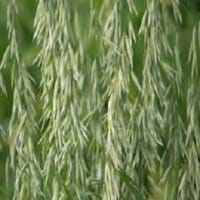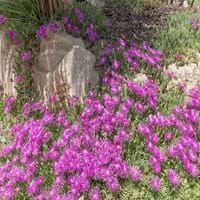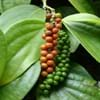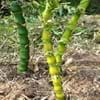Life Span
Annual
Perennial
Type
Grass
Flowering Plants
Origin
Hybrid origin, Europe
Southern Africa, South Africa
Types
Not Available
Not Available
Habitat
Farms
By seashore, gardens
USDA Hardiness Zone
Not Available
Not Available
AHS Heat Zone
10 - 1
Not Available
Sunset Zone
1a, 1b, 2a, 2b, 3a, 3b, 4, 5, 6, 7, 8, 9, 14, 15, 16, 17, 18, 19, 20, 21, 22, 23, 24
Not Available
Habit
Clump-Forming
Not Available
Minimum Height
Not Available
Minimum Width
Not Available
Flower Color
Green, Light Green
Not Available
Flower Color Modifier
Bicolor
Not Available
Fruit Color
Not Available
Non Fruiting Plant
Leaf Color in Spring
Light Green, Gray Green
Not Available
Leaf Color in Summer
Light Green
Not Available
Leaf Color in Fall
Light Green, Yellow green, Gold
Not Available
Leaf Color in Winter
Not Available
Not Available
Leaf Shape
Linear
Succulent
Plant Season
Not Available
Spring, Summer, Fall, Winter
Sunlight
Full Sun
Full Sun, Partial Sun
Growth Rate
Fast
Not Available
Type of Soil
Loam
Not Available
The pH of Soil
Neutral
Not Available
Soil Drainage
Well drained
Well drained
Bloom Time
Late Spring, Early Summer
Not Available
Tolerances
Not Available
Not Available
Where to Plant?
Ground
Container, Ground, Pot
How to Plant?
Seedlings
Stem Planting, Transplanting
Plant Maintenance
Medium
Medium
Watering Requirements
Requires a lot of watering, Requires watering in the growing season
Average Water Needs, Do Not over Water, Never Over-water, Requires watering in the growing season
In Summer
Lots of watering
Average Water
In Spring
Moderate
Average Water
In Winter
Average Water
Average Water
Soil pH
Neutral
Not Available
Soil Type
Loam
Not Available
Soil Drainage Capacity
Well drained
Well drained
Sun Exposure
Full Sun
Full Sun, Partial Sun
Pruning
Remove damaged leaves, Remove dead branches, Remove dead leaves
Remove damaged leaves, Remove dead branches, Remove dead leaves
Fertilizers
All-Purpose Liquid Fertilizer
All-Purpose Liquid Fertilizer
Pests and Diseases
Red blotch
Red blotch
Plant Tolerance
Drought
Drought
Flowers
Insignificant
Showy
Flower Petal Number
Single
Single
Showy Fruit
Yes
Not Available
Edible Fruit
Yes
Not Available
Fragrant Fruit
No
Not Available
Fragrant Leaf
No
Not Available
Fragrant Bark/Stem
No
Not Available
Showy Foliage
No
Not Available
Showy Bark
No
Not Available
Foliage Texture
Fine
Bold
Foliage Sheen
Glossy
Not Available
Self-Sowing
Yes
Not Available
Attracts
Not Available
Butterflies
Allergy
no allergic reactions
Not Available
Aesthetic Uses
Not Used For Aesthetic Purpose
Beautification, Bouquets, Cottage Garden, Decorating walls, Ground Cover, Landscape Designing, Showy Purposes, Used for decorating walls, fences, gates, hedges, etc.
Beauty Benefits
Not Available
Not Available
Environmental Uses
Air purification
Food for insects
Medicinal Uses
Menstrual Disorders, osteoporosis, Urinary tract problems
No Medicinal Use
Part of Plant Used
Whole plant
Flowers
Other Uses
Culinary use, Used for pasture
Decoration Purposes, Showy Purposes, Used as Ornamental plant
Used As Indoor Plant
No
No
Used As Outdoor Plant
Yes
Yes
Garden Design
Edible
Container, Edging, Groundcover, Mixed Border, Rock Garden, Wall
Botanical Name
AVENA sativa
DELOSPERMA
Common Name
Oat
Trailing Iceplant
In Hindi
जई
Delosperma cooperi
In German
Haferpflanze
Mittagsblume
In French
Plantes d'avoine
Delosperma cooperi
In Spanish
planta de avena
Delosperma cooperi
In Greek
φυτό βρώμη
Delosperma cooperi
In Portuguese
aveia planta
Delosperma cooperi
In Polish
Owies roślin
Delosperma cooperi
In Latin
Oat plant
Delosperma cooperi
Phylum
Tracheophyta
Not Available
Class
Liliopsida
Magnoliopsida
Order
Poales
Caryophyllales
Genus
Avena
Caryophyllales
Clade
Angiosperms, Commelinids, Monocots
Angiosperms, Core eudicots, Eudicots
Tribe
Aveneae
Not Available
Subfamily
Pooideae
Ruschioideae
Number of Species
Not Available
Properties of Oat plant and Delosperma cooperi
Wondering what are the properties of Oat plant and Delosperma cooperi? We provide you with everything About Oat plant and Delosperma cooperi. Oat plant doesn't have thorns and Delosperma cooperi doesn't have thorns. Also Oat plant does not have fragrant flowers. Oat plant has allergic reactions like no allergic reactions and Delosperma cooperi has allergic reactions like no allergic reactions. Compare all the properties and characteristics of these two plants. Find out which of these plant can be used as indoor plant. If you are interested to decorate your house and garden, find out aesthetic uses, compare them and select the plant which will beautify your surrounding. Along with beautification, try comparing medicinal and edible uses of Oat plant and Delosperma cooperi and you can choose the plant having best and most benefits.
Season and Care of Oat plant and Delosperma cooperi
Season and care of Oat plant and Delosperma cooperi is important to know. While considering everything about Oat plant and Delosperma cooperi Care, growing season is an essential factor. Oat plant season is Not Available and Delosperma cooperi season is Not Available. The type of soil for Oat plant is Loam and for Delosperma cooperi is Not Available while the PH of soil for Oat plant is Neutral and for Delosperma cooperi is Not Available.
Oat plant and Delosperma cooperi Physical Information
Oat plant and Delosperma cooperi physical information is very important for comparison. Oat plant height is 60.00 cm and width 10.20 cm whereas Delosperma cooperi height is Not Available and width Not Available. The color specification of Oat plant and Delosperma cooperi are as follows:
Oat plant flower color: Green, Light Green
Oat plant leaf color: Light Green and Gray Green
Delosperma cooperi flower color: Not Available
- Delosperma cooperi leaf color: Not Available
Care of Oat plant and Delosperma cooperi
Care of Oat plant and Delosperma cooperi include pruning, fertilizers, watering etc. Oat plant pruning is done Remove damaged leaves, Remove dead branches and Remove dead leaves and Delosperma cooperi pruning is done Remove damaged leaves, Remove dead branches and Remove dead leaves. In summer Oat plant needs Lots of watering and in winter, it needs Average Water. Whereas, in summer Delosperma cooperi needs Average Water and in winter, it needs Average Water.





